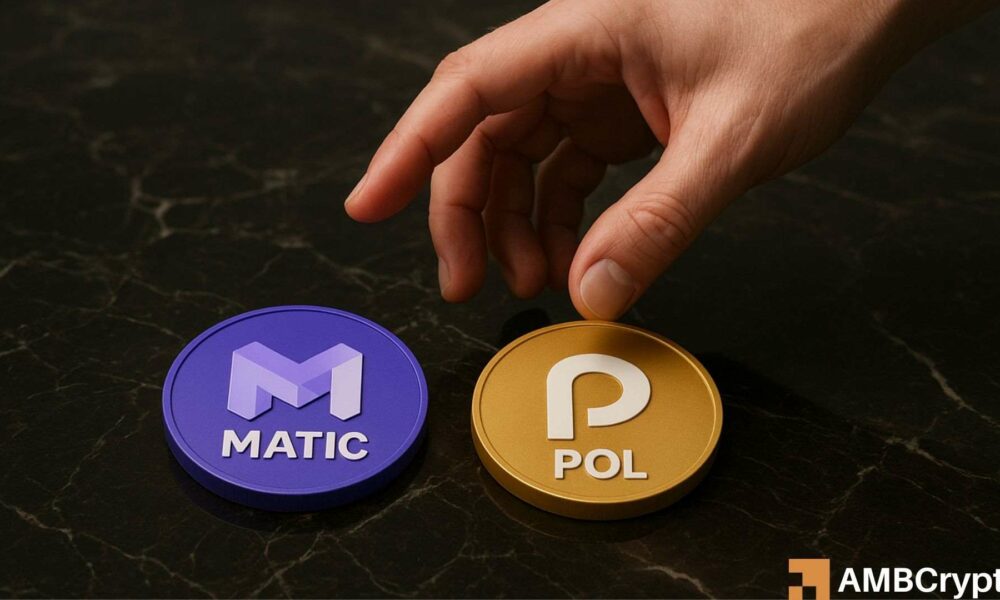Polygon’s Branding Dilemma: Navigating the Shift from MATIC to POL
In the ever-evolving landscape of blockchain technology, branding can significantly influence user perception and market performance. Recently, Ethereum Layer 2 solution Polygon has found itself at the crossroads of an identity crisis, marked by its controversial transition from the well-known MATIC token to the newly branded POL. This shift has left many in the community questioning the implications of such changes and the long-term strategy for brand alignment.
The Shift to POL: A Changing Landscape
Polygon, initially launched as the Matic Network in 2017 and rebranded in 2021, took a definitive step in its evolution by changing its token ticker from MATIC to POL in mid-2023. This change aimed to reflect the project’s growth from a single chain to multiple interconnected systems including the interoperation layer AggLayer and the Polygon zkEVM. However, the branding change has led to significant confusion among its user base, with almost 95% of non-Crypto Twitter users reportedly still associating the platform with its former MATIC brand.
The decision to transition to POL was largely based on the belief that it aligns more closely with Polygon’s vision of scaling solutions in the blockchain ecosystem. However, critics argue that this rebranding may alienate a significant portion of users who remain unaware of the shift. As Polygon’s CEO, Sandeep Nailwal, gathered feedback, opinions were mixed—some advocating for a return to MATIC for brand recognition while others felt that maintaining the POL brand would contribute to clarity in the long run.
Community Reactions: Divided Opinions
The response within the Polygon community to the POL branding has been divided. Some community members assert that reverting back to the MATIC brand would simply cause further confusion rather than clarity. They argue that effective education and communication could bridge the gap between the old and new brand identities. One user expressed, “Yes, recognition matters, but we solve that with better education and clearer messaging—not by rolling back the identity we just established.”
On the other hand, proponents of a return to MATIC emphasize the strength of a familiar, well-established brand. This sentiment raises essential questions about brand loyalty and the importance of user connection to a project’s identity in a rapidly changing environment. As a decentralized platform, Polygon is heavily reliant on community engagement, making user sentiment a critical component of its success.
Historical Context: The Rise of Polygon
Understanding the origins of Polygon provides perspective on the significance of its branding choices. Founded as Matic Network, the platform hit its mainnet in 2020 and quickly established itself by utilizing the MATIC token as a utility for transactions and securing the network through staking. Over the years, Polygon has undergone a remarkable transformation, evolving from a singular chain solution to a comprehensive scaling framework designed to address various blockchain challenges.
The rebranding to Polygon in 2021 expanded its scope to encompass multiple interconnected protocols, allowing for interoperability within the Ethereum ecosystem. However, this transition also set the stage for the contentious move to POL, which some community members believe was premature and unnecessary.
Impact of the Rebranding on Market Dynamics
Following the rebranding to POL, the market responded initially with a modest uptick in demand. Data from Santiment indicated a slight accumulation of POL tokens post-rebranding. However, this momentum dissipated sharply in the latter half of 2024, leading to an extended period of negative growth until late October 2025. This volatility highlights the challenges faced by Polygon amid broader market conditions.
Despite an optimistic recovery in early 2025, where 631 million POL tokens were reported out of exchanges—a generally bullish indicator—active addresses stagnated during the same period. The price of POL has also seen a steep decline, dropping by 83% from its 2024 peak of $0.75 to $0.13, exacerbated by overarching market weakness. Such fluctuations underscore the delicate balance between branding, market perception, and overall project health.
Looking Ahead: Prioritizing Education and Communication
As Polygon navigates its branding crisis, prioritizing user education and effective communication is paramount. While the rebranding initiative aimed to signify growth and adaptation, without addressing the concerns of their user base, future rebranding efforts may be met with skepticism. Community feedback should be a guiding force as Polygon reevaluates its strategies and messaging.
The current trajectory suggests that brand awareness for POL could improve as Polygon invests in educational campaigns that bridge the comprehension gap between MATIC and POL. By fostering an understanding of how the new branding aligns with their evolving technology, Polygon may strengthen community ties and enhance overall brand perception.
Conclusion: The Road Ahead for Polygon
Polygon’s identity crisis serves as a pertinent reminder of the impact of branding in the fast-paced world of blockchain technology. The choice to rebrand from MATIC to POL has sparked an essential conversation within the community about the nature of brand recognition and user loyalty. As Polygon continues to innovate and grow, leveraging community input and emphasizing clarity in messaging will be critical for overcoming the current challenges and solidifying its position as a leader in the blockchain space.


